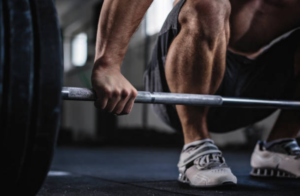
Find out why it’s a myth that all athletes or gym rats have a low resting heart rate.
Do you work out hard at the gym and even do high intensity interval training, yet are mystified over your relatively high resting pulse?
A normal resting heart rate for the general population is between 60 and 100.
A muscle-building enthusiast who also does high intensity interval training, and even some miscellaneous cardio jaunts such as lengthy hikes, may still find he or she has a resting heart rate in the 70s or even low 80s – which seems high for an athlete.
What’s the reason some athletes have a higher resting heart rate?
“Most ‘athletes’ are weekend warriors or those who run daily or work out; but they are not necessarily career athletes,” says Dr. Sameer Sayeed, a cardiologist at ColumbiaDoctors of Somers, NY.
“Their level of exercise is greater than the general population who doesn’t exercise or just does light walking.
“But their exercise is not enough to cause the very low resting heart rates associated with more career athletes like Olympians or marathon runners who train every day, all year-round, and are so well-conditioned that their hearts develop the features of an athlete’s heart, with a stronger, thicker muscle and larger chamber for higher blood flow and the low resting heart rate from such severe endurance.”
Tennis great Bjorn Borg was reported to have had a resting pulse of 38, though that’s been refuted, and it was likely more like 50-60.
Many marathon runners, who are not professional caliber, report a resting heart rate in the 40s and 50s.
I asked Dr. Sayeed if the really low resting heart rate is associated usually with elite endurance athletes, and he said it is. “They do severe training daily for months to years,” he adds.
What about hardcore gym athletes who strain and severely tax their bodies with heavy weight workouts?

Though a powerlifter or bodybuilder will strain through sets that leave their heart pounding at the end, this type of training simply cannot be compared to running for two hours straight.
“They are not doing severe training like a marathoner or Olympian,” says Dr. Sayeed.
The “severity” in this case refers to how much the cardiac muscle is taxed, not how much weight the bones and skeletal muscles can move.
Serious marathoners may run 10-15 miles every day, and at a painful, nonstop pace.
Whereas the powerlifter or bodybuilder is painfully active only for a fraction of that time, even though a gym workout may last two hours. Most of that training time is spent resting.
High intensity interval training will help lower resting heart rate and has several advantages over long-distance running, for those whose goals are related to fitness and fat loss rather than completing marathons.
An athlete or hardcore gym enthusiast may have a relatively fast resting pulse due to factors that raise resting heart rate, such as ongoing stress and anxiety, caffeine, medications and smoking (yes, some gym enthusiasts actually smoke).
Finally, overtraining can elevate the resting pulse.
Signs of overtraining also include moodiness or irritability, ongoing fatigue, trouble with sleep, failure to progress, or even regression with performance.

Dr. Sayeed performs echocardiograms and stress tests at the Midtown Manhattan and Westchester offices at Columbia Doctors. He is also trained in cardiac CT imaging.
 Lorra Garrick has been covering medical, fitness and cybersecurity topics for many years, having written thousands of articles for print magazines and websites, including as a ghostwriter. She’s also a former ACE-certified personal trainer.
Lorra Garrick has been covering medical, fitness and cybersecurity topics for many years, having written thousands of articles for print magazines and websites, including as a ghostwriter. She’s also a former ACE-certified personal trainer.
.









































